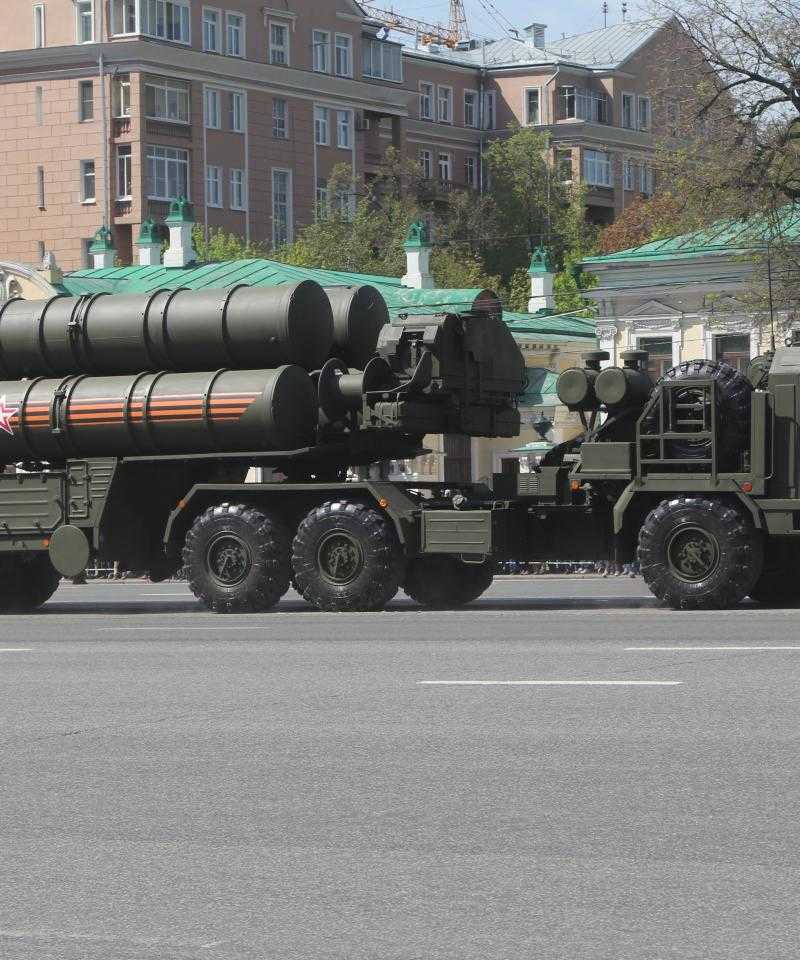War profiteer of the month: Almaz-Antey

Almaz-Antey is the largest Russian arms company, made up of dozens of smaller companies. It is owned by the state, employs around 98,000 people, and produces a wide range of missiles, anti-aircraft systems, radars, automated turrets, naval artillery, and firearms.
In 2017 Almaz Antey ranked 10th in the Stockholm International Peace Research Institute’s top 100 arms companies, rising from 13th in 2016, which was the first time a Russian company had appeared in the top 10. In 2017 the company made US$8.5 billion worth of arms sales making up 94% of the company’s income. The company has been targetted by US and EU sanctions, in response to Russia’s involvement in the conflict in the Ukraine, and the annexation of Crimea.
Almaz-Antey regularly displays at arms fairs around the world, including most recently at the Aero India 2019 aerospace show, MILEX 2019 in Belarus, and IDEF 2019 in Turkey.
Anti-aircraft systems
The S-400 anti-aircraft system is an air-defence system designed and built by a subsidiary of Almaz Antey called MKB Fakel, and has been described as “one of the best air-defence systems in the world”. The S-400 replaced the S-300 system, and went into service in 2007. The system comprises of four missiles able to hit targets at varying distances, from over 300km away, to a short range missile with a 40km range. The system is mounted on trucks and turrets that can be rapidly deployed by just a few people. The S-400 has been sold (or in some cases given for free) to: Belarus, China, Turkey, Saudi Arabia and India. Each system – consisting of 8 launchers, 112 missiles, command and support vehicles - costs $400 million.
The S-300 system has been used by a wide range of countries. Iran paid for an unknown number of S-300 batteries in 2007, but only received them in 2006. Iran’s acquisition of the S-300 was one of the alleged motivations behind the Israeli Air Force purchasing F35 jets from the USA. There are also concerns that Turkey’s decision to purchase both the S-400 system from Russia, and F35 jets from the USA could expose vulnerabilities in the F35 that could be exploited by Russia. Because of this, the USA has suspended delivery of the F35 jets to Turkey, and Russia is due to deliver the S-400 to Turkey in July 2019, though there are reports that they will not be received until 2020. It has been reported that the Turkish military will not be allowed access to the internal electronic systems of the S-400.
The company is also developing an upgrade on the S-400 – the S-500, boasting an increased range and various other technical improvements designed as a “blow against American prestige”. The S-500 was due to go into production in 2014, but that has been pushed back to both 2017 and then to 2020. Commentators speculate the delays might be due to technical issues, or concerns that going into production with the S-500 might curb interest in the S-400 from prospective international buyers.
In late 2018, Almaz Antey revealed details of a new surface-to-air missile system called the 9K317E Viking system, which is "is designed to engage cruise missile, frontline and strategic aircraft, high-precision weapons, stealth targets, rotary-wing platforms [including hovering], and radio-emitting surface and ground targets in contested areas” and can simultaneously attack 36 targets.
In 2015, a Buk anti-aircraft system built by Almaz-Antey was considered the most likely culprit for the shooting down of the MH17 passenger flight over eastern Ukraine, killing all 298 people on board. The company didn’t deny a Buk was used, but questioned who fired the weapon and from which territory, and even suggested staging a reconstruction of the crash, in order to “prove the angles”.
Add new comment